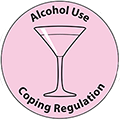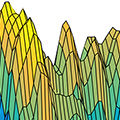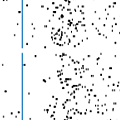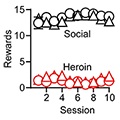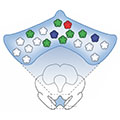Hot Off the Press – March 27 , 2020. The current study offers a mechanistic explanation for the protective effect of social interaction on incubation of craving in rodents, showing that it is mediated by the activation of neurons expressing the enzyme PKCδ the brain’s amygdala. The study also shows that activation of a peptide… [Read More]
News Main
Advances in the science and treatment of alcohol use disorder.
Reviews To Read – March 2020. In this review, the authors critically report the scientific and clinical evidence supporting alcohol use disorder as a treatable disease using medications and/or behavioral treatments. Approved treatments and promising new interventions are reviewed and discussed, with a special emphasis on personal treatment approaches. The authors also note the critical… [Read More]
Dopamine neuron ensembles signal the content of sensory prediction errors
Featured Paper of the Month – March 2020
Published in Elife by Stalnaker, Thomas A; Howard, James D; Takahashi, Yuji K; Gershman, Samuel J; Kahnt, Thorsten; Schoenbaum, Geoffrey
Midbrain dopamine neurons have long been thought to collectively signal a value prediction error, indicating whether the value of an event is greater or less than expected. A few years ago, our lab showed that these neurons also signal if an event is different than expected, without regard for value. In this paper, we build on this prior result by showing in both rats and humans that dopamine neurons or midbrain BOLD voxels, as a group, signal which unexpected event has occurred…
Cannabidiol: Not a Cure-All, but a Candidate for Coping With Cue-Induced Craving
Reviews To Read – February 2020. In this commentary, David Epstein evaluates a recent human-laboratory study that showed promising results for cannabidiol (CBD) as an anti-craving medication in people with recent histories of opioid use disorder (OUD). He emphasizes that people at different stages of opioid use or OUD have different needs, so potential treatments… [Read More]
Eliot Gardner Wins WCBR Pioneer Award
The Winter Conference on Brain Research (WCBR) has presented Eliot Gardner, Ph.D. of the NIDA IRP with the Pioneer Award for his lifetime of work in the field of neuropsychopharmacology. Dr. Gardner has attended WCBR for more than 50 years , participating in countless panels and workshops. He has also brought many of his students… [Read More]
High-potency ligands for DREADD imaging and activation in rodents and monkeys.
Featured Paper of the Month – February 2020
Published in Nature Communications by Bonaventura, Jordi; Eldridge, Mark A G; Hu, Feng; Gomez, Juan L; Sanchez-Soto, Marta; Abramyan, Ara M; Lam, Sherry; Boehm, Matthew A; Ruiz, Christina; Farrell, Mitchell R; Moreno, Andrea; Faress, Islam Mustafa Galal; Andersen, Niels; Lin, John Y; Moaddel, Ruin; Morris, Patrick J; Shi, Lei; Sibley, David R; Mahler, Stephen V; Nabavi, Sadegh; Pomper, Martin G; Bonci, Antonello; Horti, Andrew G; Richmond, Barry J; Michaelides, Michael
Designer Receptors Exclusively Activated by Designer Drugs (DREADDs) are a popular chemogenetic technology for manipulation of neuronal activity in uninstrumented awake animals with potential for human applications as well. The prototypical DREADD agonist clozapine N-oxide (CNO) lacks brain entry and converts to clozapine, making it difficult to apply in basic and translational applications…
Orbitofrontal cortex is selectively activated in a primate model of attentional bias to cocaine cues.
Featured Paper of the Month – January 2020
Published in Neuropsychopharmacology by Baeg, Eunha; Jedema, Hank P; Bradberry, Charles W
Drug-associated cues can intrude upon thinking, making relapse more likely. A measure of how strongly cues engage cognitive resources is called attentional bias. This is reflected in slightly longer response times on trials on a stimulus response task when drug cues are present compared to non-drug cues. In both cases, the cue is an irrelevant distractor that should just be ignored. Attentional bias is clinically important, because, across individuals, it correlates with extent of current use, and risk of relapse among those attempting abstinence…
Operant Social Reward Decreases Incubation of Heroin Craving in Male and Female Rats.
Hot Off the Press – December 18 , 2019. We recently developed a rat model of relapse after voluntary abstinence from methamphetamine self-administration that is based on behavioral treatments in humans with substance use problems. In the present study, we extend this work to heroin self-administration, demonstrating that when rats are given the opportunity to… [Read More]
The Ventral Tegmental Area has calbindin neurons with the capability to co-release glutamate and dopamine into the nucleus accumbens.
Featured Paper of the Month – December 2019
Published in European Journal of Neuroscience by Mongia, Smriti; Yamaguchi, Tsuyoshi; Liu, Bing; Zhang, Shiliang; Wang, Huiling; Morales, Marisela
Unraveling the mystery of the glutamate-dopamine connection
The ventral tegmental area (VTA) is a brain structure that participates in the rewarding effects of drug use, but the role of specific neurons within the VTA is unclear. Scientists at NIDA’s Intramural Research Program conducted a set of studies to better understand the function of glutamate neurons in this addiction-relevant brain region. Glutamate is an excitatory neurotransmitter that plays an important role in brain development, normal brain processes, and pathological conditions like addiction…
Activation of a lateral hypothalamic-ventral tegmental circuit gates motivation
Featured Paper of the Month – November 2019
Published in PLoS One by Schiffino, Felipe L; Siemian, Justin N; Petrella, Michele; Laing, Brenton T; Sarsfield, Sarah; Borja, Cara B; Gajendiran, Anjali; Zuccoli, Maria Laura; Aponte, Yeka
Motivated states such as food-seeking and consumption are essential for survival. A brain region called the lateral hypothalamus (LH) plays a fundamental role in regulating feeding and reward-related behaviors, but the contributions of specific neuronal subpopulations in the LH have not been thoroughly characterized. Here we examine how lateral hypothalamic leptin receptor-expressing (LHLEPR) neurons, a subset of GABAergic cells, regulate motivation in mice. We trained mice to lever-press for food pellets on a progressive ratio schedule, a model commonly used to assess motivation to obtain a reinforcer…


